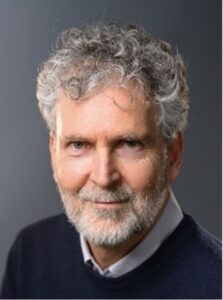Participants
The RESILIENCE team consists of field-leading and complementary PI’s and is capable of addressing all aspects of this overarching project, linking theory and observation, spanning the fields of ecology, physics and mathematics.

Max Rietkerk – Spatial ecology & global change
Max develops and tests novel theory for critical transitions and spatial pattern formation in various ecosystems based on spatial ecology. His successful approach is a combination of ecosystem specific modelling, data gathering and analysis together with ecosystem generic modelling. He uses and validates spatial models with experiments, data collection and the use of existing data sets. Highly cited key results include the discoveries of universal spatial organization in various ecosystems associated with critical transitions. Also, he discovered the principle of scale-dependent feedback, underlying emergent spatial self-organization in many ecosystems, and he is also part of the team revealing generic early warning signals for critical transitions in complex systems. Recently he is coordinating PI of the ERC-Synergy project: Pathways of resilience and evasion of tipping in ecosystems.

Arjen Doelman – The Dynamics of Patterns
Arjen focuses his research on pattern formation, or in mathematical terms: the dynamics of solutions of nonlinear systems of evolutionary partial differential equations. The driving force behind his research is the rich cross-fertilization between mathematics and other research areas: his mathematical contributions are inspired by translating questions from, and observations in, other scientific fields into a mathematical framework, with his mathematical point of view he aims at providing fundamental novel insights in fields beyond mathematics. In that vein, he has contributed to neuroscience, bio-membranes, phytoplankton dynamics, the geophysics of sandbank generation and coastal evolution, and the hydrodynamics of tidal oscillations and internal (ocean) waves. His mathematical work especially concerns the existence, stability and dynamics of (interacting) localized structures in singularly perturbed systems. The present focus of his research is on ecosystem resilience, naturally in direct interaction with the mathematics of the dynamics of patterns.

Isla Myers-Smith – Global change ecologist
Isla is a global change ecologist who investigates plants in the Arctic and beyond and how ecosystems are responding to climate change. Her research examines the ‘greening of the Arctic’ in response to climate warming and impacts including shrub expansion and permafrost thaw. Her research group ‘Team Shrub’ use tools from measuring tapes to drones to capture Arctic change across landscapes in the Canadian Arctic and around the tundra biome. She works collaboratively with local communities and international research teams to better understand environmental change in the Arctic and beyond. She is particularly excited to explore how spatial patterning could influence the resilience of tundra and savanna ecosystems to global change.

Ehud Meron – Nonlinear physics of ecosystems
Meron is an expert in pattern formation theory in general and front dynamics in particular. He has made important contributions to understanding front dynamics in activator–inhibitor systems and in periodically forced oscillatory systems, highlighting the roles front instabilities play in initiating and nurturing complex spatiotemporal patterns. In his studies, he has collaborated with leading experimentalists on testing theoretical predictions in controlled laboratory experiments, mostly on reaction-diffusion systems. Later, Meron started applying his expertise to vegetation pattern formation in drylands, importing concepts and tools of nonlinear physics and collaborating with ecologists. He has made pioneering contributions to the modeling and understanding of the positive feedback loops that drive vegetation pattern formation, the multitude of regular, localized, and irregular patterns that emerge along environmental gradients, and their implications for biodiversity and ecosystem function. Meron is a Phyllis and Kurt Kilstock Chair Professor in Environmental Physics of Arid Zones at the Blaustein Institutes for Desert Research, Ben-Gurion University of the Negev, and the author of the monograph Nonlinear Physics of Ecosystems (CRC 2015).

